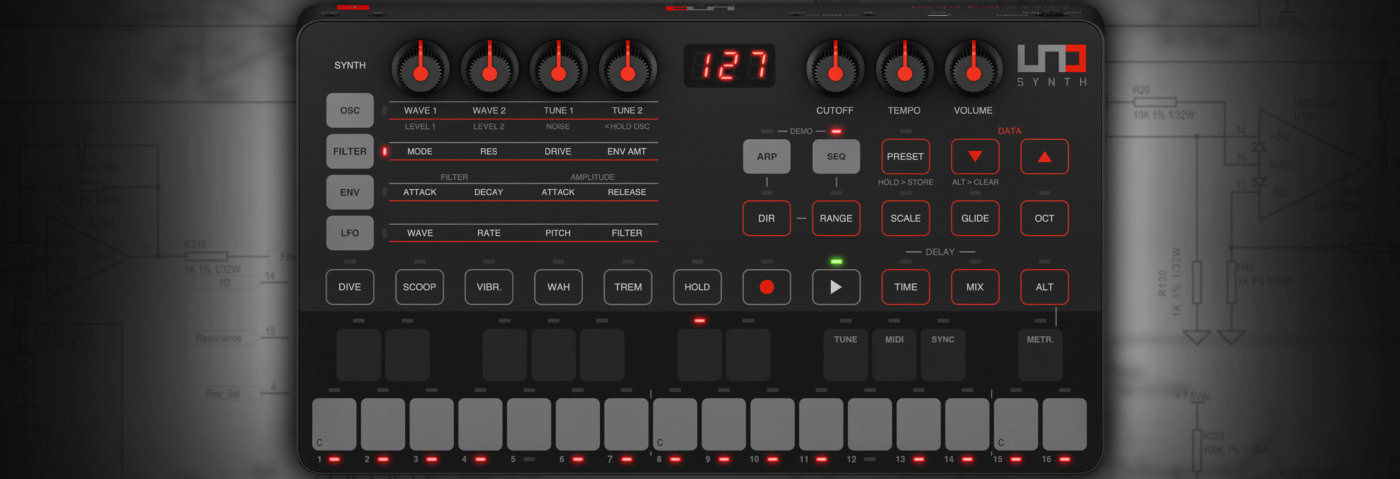Can a £210 analogue monosynth strike the right balance between price, sound, design and durability? James Russell puts the batteries in to find out.
First things first, the UNO Synth is a two-oscillator analogue monosynth with 27 keys, MIDI in and out (two jack-to-DIN converters are supplied). Audio comes out via a 3.5mm jack and there’s an audio in port, too. The unit can be battery powered (four AA batteries) or run off USB power. It also comes with computer-based editing software, which isn’t a focus in this review.
When you’re creating an entry-level analogue synth for a low price there’ll naturally be some trade-offs in the design and feature set. This is completely expected. The question is, what compromises have been made, and where have the Italian company spent the money in order to make this a viable investment?
After a few sessions on the UNO, that becomes pretty clear: this is a synth that touts its sound and functions, which results in a high-quality analogue monosynth that’ll keep you coming back for more – forsaking deadlines and basic nutrition along the way.
Synthesis controls are very typical as monosynths go. You get two oscillators with variable analogue waveforms and tuning, a Filter with low-, high- or band-pass modes, envelopes for the filter and amplitude and an LFO that can be hooked up to pitch and/or filter cutoff. A recent firmware update has made full ADSR control possible over both envelopes. Sure, there’s nothing particularly special like you might find on a synth with a four-figure price tag but most crucially there’s nothing missing whatsoever.
TOCCA E SENTIRE
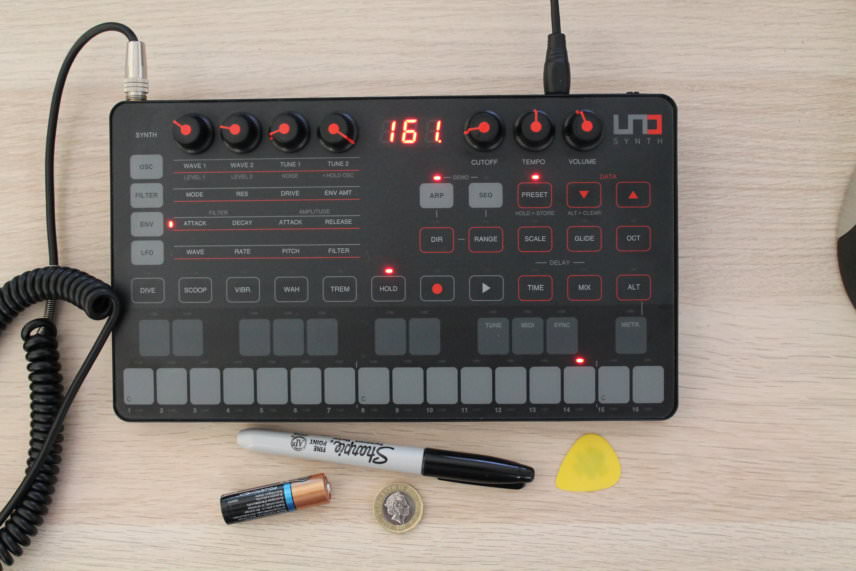
Where IK have opted to save money, very understandably, is in the construction of the synth. The UNO Synth is small, made from plastic, and primarily uses flat touch controls instead of keys or knobs. The plastic construction feels thankfully solid, and goes as a reminder that “it’s the sound that counts” for a synth you only paid £210 for. But how about actually playing the thing?
While I was skeptical about the keyboard to begin with, it’s actually very accessible, intuitive and its hard to put a note wrong with. The Hold function tends to help in keeping notes ‘pressed’, and you can increase the memory to introduce more notes when using the capable arpeggiator which is one of many performance controls that make the UNO Synth so versatile and addictive.
QUATTRO PROBLEMI
The flat, touch keyboard is better than I expected, but what I found slightly disappointing, strangely, is the one part of the UNO Synth that is actually tactile: the seven knobs along the top of the UNO Synth.
The three right-hand knobs are dedicated to filter Cutoff, master Tempo and output Volume. No problems there. But the knobs on the left-hand are a different story…
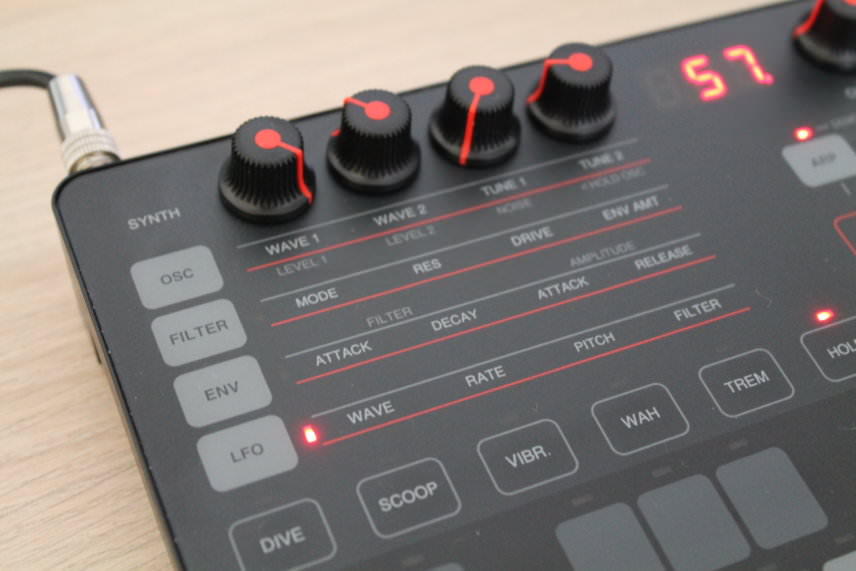
Using the four touch pads on the left-hand side, you select what the four knobs along the top will control. Select OSC, and the four adjacent knobs control Wave 1, Wave 2, Tune 1 and Tune 2, for the synth’s two oscillators. Select Env, and those same four knobs now control Filter Attack and Decay, plus amplitude Attack and Release. You can also set those same four knobs to control filter properties, LFO properties, or a secondary lot for the oscillators.
Here’s the problem, though: Those four knobs are fixed-position knobs, not endless rotary encoders. In LFO mode, use the left-hand knob to set the LFO wave shape, and when you go back to Env mode and try to set the Filter Attack, that control will jump to where you set the value for the previous control. Endless rotary encoders would have perhaps made more sense, as they can store values regardless of where the knob is set.
However, there is a solution whereby the behaviour of the knobs can be set in the free UNO editor. This allows you to choose the behaviour of the knobs as – absolute, pass-through or relative. So, users do still have the option available to amend the response of the knobs but it’s user selected and not as default.
Enough Italian titles already, what are the best bits?
I’m pleased to say that this is my only significant criticism. The overwhelming impression of the UNO Synth is that it’s fun, creative and inspiring thanks to the sheer amount of stuff you can do with it. If you’re looking for rich, punchy, classic analogue sounds at a budget then this is for you.
The performance controls, for example, supplement your keyboard skills with a number of tricks. These more than make up for the lack of traditional pitch and mod wheels and actually benefit from being played as touch zones. Dive simulates a pitch bend from a semitone up to the note that’s playing, while Scoop does the opposite, generating divebomb-style sounds. Vibr momentarily kicks in the pitch LFO depth, Wah does the same for filter LFO, and Trem applies amplitude modulation, which isn’t otherwise available to program in.
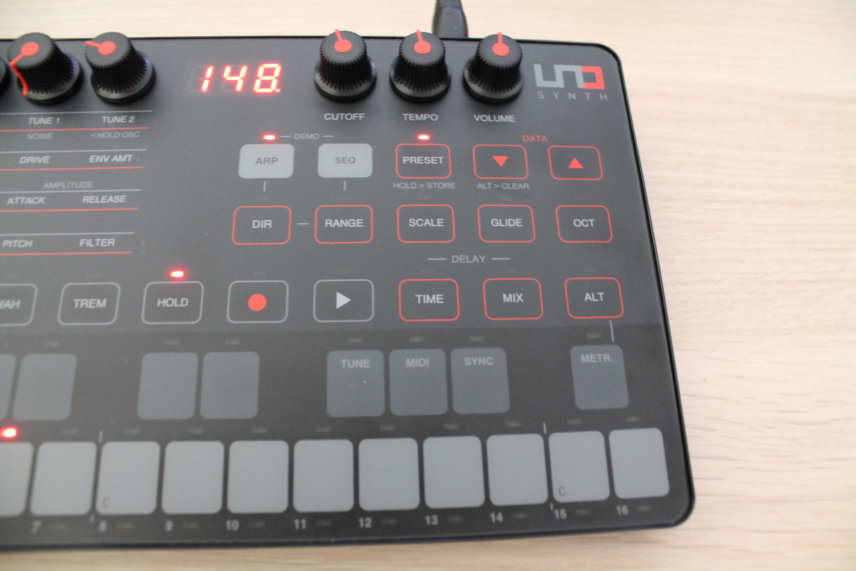
The UNO Synth’s arpeggiator is probably its most fun feature. Activate it and hold down multiple notes to have them play in sequence, as you’d expect. You can control the global Tempo and the direction of the notes it plays (ten ‘directions’ including as-played, random). The arpeggiator comes into its own when combined with the note Hold mode, and the Range can be set to also play notes up to four octaves above. A monosynth absolutely needs an arpeggiator so it’s great to see how fully-featured this particular one is.
PLUS ONE
There are many other things that The UNO Synth can do. Practically every base of what’s truly necessary in a synth is covered. There’s a Delay circuit with Time and Mix controls, which can be brought down to almost chorus rates, there’s Glide, Octave selection, 14 pre-defined scales that let you jam in-key using only the white notes.
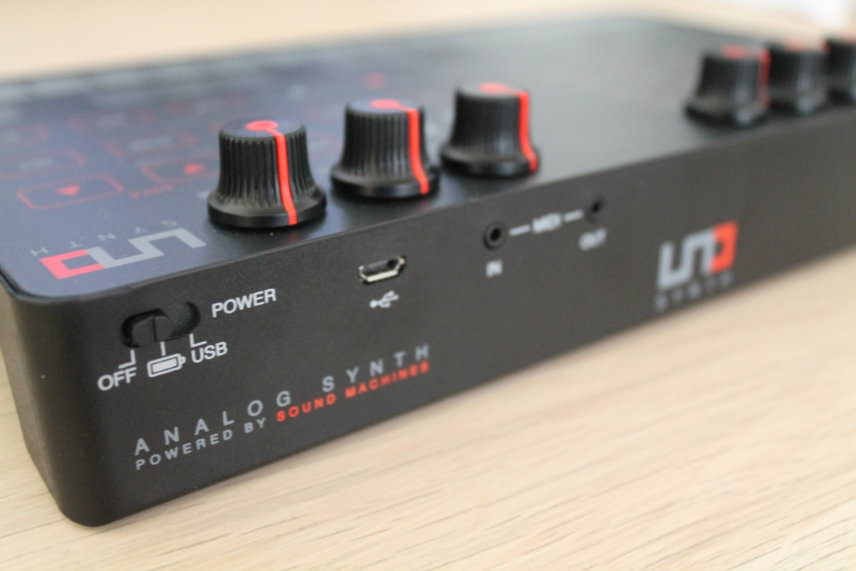
MINUS ONE
While the UNO Synth is generally something of a triumph for the price, there are some minor imperfections. Switching the synth to battery-powered mode causes a loud pop, firmware updating isn’t an easy process, pitch mod assignments should have semitone selection and endless rotary encoders would have been a better choice than fixed-position knobs.
VERDICT
Criticisms aside, The UNO Synth is a great way to get started if you’re on a budget and demand an analogue signal path. It’ll help new synthesists learn their first principles for cheap, it has enough functions to keep it part of someone’s setup long after and it could be a trusty, portable friend for experienced professionals who don’t want to lug around their expensive gear.
IK’s decision to put their resources into the UNO Synth’s sound and functionality was the correct choice, and should lead to a solid legacy. Without ownership of a crystal ball, we can’t tell if the build quality will endure over the years, but we can still assure readers that this capable, fun monosynth is a recommended fun and cheap addition to your setup or an affordable entry into analogue synths.
